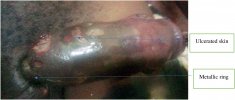Clinical Presentation, Management and Follow-Up Of 83 Patients with Leydig Cell Tumors of The Testis
Study question: When should 'not so rare' Leydig cell tumors (LCTs) of the testis be suspected, diagnosed, and treated?
Summary answer: LCTs are more frequent than generally believed, are associated with male infertility, cryptorchidism and gynecomastia, and should be treated conservatively (in compliant patients) with active surveillance, which appears to be a safe alternative to surgical enucleation.
What is known already: Increasing referrals for testicular imaging have led to an increase in findings of LCTs. The features and natural history of these tumors remain largely unknown, as the available studies are small and heterogeneous. LCTs were previously treated aggressively and follow-up data are lacking.
Study design, size, duration: A case-cohort study of consecutive patients diagnosed with LCTs over a 10-year period was prospectively enrolled from 2009 to 2018 and compared to matched cohorts of patients with seminomas or no testicular lesions screened in the same timeframe.
Participants/materials, setting, methods: Of the 9949 inpatients and outpatients referred for scrotal ultrasound, a total of 83 men with LCTs were included. Enrolled subjects underwent medical history and clinical examination and were asked to undergo routine blood tests, hormone investigations (FSH, LH, total testosterone, estradiol, inhibin B, sex hormone-binding globulin (SHBG), prolactin), and semen analysis.
Patients who consented also underwent contrast-enhanced ultrasound, elastography, gadolinium-enhanced scrotal magnetic resonance imaging, and hCG stimulation test (5000 IU i.m.) with serum total testosterone and estradiol measured at 0, 24, 48, and 72 hours.
Main results and the role of chance: In total, 83 patients diagnosed with LCTs were compared against 90 patients diagnosed with seminoma and 2683 patients without testicular lesions (NoL). LCTs were diagnosed by enucleation (48.2%), orchiectomy (13.3%), or clinical surveillance (38.5%).
Testicular volume, sperm concentration, and morphology were lower (P = 0.001, P = 0.001, and P < 0.001, respectively) in patients with LCTs than in the NoL group. FSH, LH, and SHBG were higher and the testosterone/LH ratio was lower in LCTs than in the NoL group (P < 0.001). The LCT group showed higher SHBG (P = 0.018), lower sperm concentration (P = 0.029), and lower motility (P = 0.049) than the seminoma group.
Risk factors for LCTs were cryptorchidism (χ2 = 28.27, P < 0.001), gynecomastia (χ2 = 54.22, P < 0.001), and low testicular volume (χ2 = 11.13, P = 0.001). Five cases were recurrences or bilateral lesions; none developed metastases during follow-up (median, 66 months).
Limitations, reasons for caution: This study has some limitations. First, hCG and second-line diagnostic investigations were not available for all tumor patients. Second, ours is a referral center for infertility, thus a selection bias may have altered the baseline features of the LCT population. However, given that the comparison cohorts were also from the same center and had been managed with a similar protocol, we do not expect a significant effect.
Wider implications of the findings: LCTs are strongly associated with male infertility, cryptorchidism, and gynecomastia, supporting the hypothesis that testicular dysgenesis syndrome plays a role in their development.
Patients with LCTs are at a greater risk of endocrine and spermatogenesis abnormalities even when the tumor is resected, and thus require long-term follow-up and prompt efforts to preserve fertility after diagnosis.
LCTs have a good oncological prognosis when recognized early, as tissue-sparing enucleation is curative and should replace orchiectomy. Conservative surgery and, in compliant patients, active surveillance through clinical and radiological follow-up are safe options, but require monitoring of testicular failure and recurrence.
Pozza C, Pofi R, Tenuta M, et al. Clinical presentation, management and follow-up of 83 patients with Leydig cell tumors of the testis: a prospective case-cohort study. Hum Reprod. 2019;34(8):1389-1403. doi:10.1093/humrep/dez083 Clinical presentation, management and follow-up of 83 patients with Leydig cell tumors of the testis: a prospective case-cohort study


